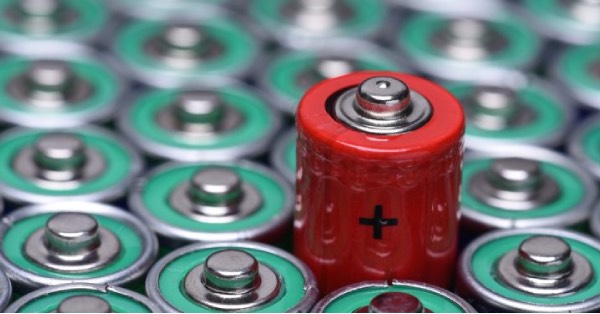During the 2023 SAFETY4SEA Limassol Forum, Taslim Imad, Manager Loss Prevention Department at Steamship Mutual, gave a presentation on safety measures of carriage and stowage of electric vehicles, from a P&I perspective.
Electric vehicles shipment growth
People are attempting to alter their habits since climate change and global warming are serious challenges. As a result, the export of hybrid and electric vehicles (EVs) powered by Lithium-ion (Li-Ion) batteries has increased significantly. Electric vehicles are completely safe, according to some parties in the business, and they are partly right. Yet, the dangers are greatly increased in the event of a thermal runaway.
Risks of carrying EVs
Electric vehicles can be transported on a variety of vessels (ferries, Ro-Ros, car carriers, container ships, general cargo etc.). The main issue with these vehicles is that they use Li-ion batteries.
Causes of damage to Li-ion batteries
- They are overcharged or over discharged
- They are overheated
- Mechanical, physical, or saltwater damage
Thermal runaway
Even if one cell is damaged, the cycle can start. There is a chemical reaction that initiates in the damaged cell which produces off-gases and heat inside of it. The heat produced inside these batteries is more than the amount that can be vented. This in turn causes the electrolyte barrier, which is a flammable liquid, to be damaged. The battery then short-circuits and starts a thermal propagation that spreads to the other cells, damaging them. The thermal runaway caused by this vicious cycle will lead to a rapid self-heating fire that can cause an explosion and produce toxic gases in car decks. To this day, there is no medium to stop the process.

This sequence of events could, for example, occur on a ferry carrying thousands of people and hundreds of electric vehicles. The outcome is not difficult to imagine.
Furthermore, new electric vehicles are frequently placed in car carriers with bumper-to-bumper spacing of 30 centimeters and mirror-to-mirror spacing of only 10 centimeters. As a result, in a carrier with thousands of vehicles, accessing the car with thermal runaway would be very difficult if not impossible, particularly if it is located in the middle of a stow
Similarly dangerous situations can arise when cars are transported as regular cargo in containers. For instance, a container with an EV could be placed next to a container with IMDG Code (International Maritime Dangerous Goods) cargo such as flammable gases or liquids.
Current regulations in terms of ship design and safety equipment
The current regulation does not specify any additional equipment or specific vessel requirements for shipping EVs. SOLAS Ch. II-2 Reg. 1, 2, and 3 contain all relevant regulations. The International Maritime Organization (IMO) is working to create a better regulatory environment, but this will most likely take several years. Even if the IMO agrees on new regulations, they may only apply to newbuilds and not to existing ships.

As a result, shipowners are strongly advised to assess their procedures and implement proactive measures to improve their own safety.
Crew training
Another issue is the lack of proper crew training. The requirements as per STCW(Standards of Training, Certification, and Watchkeeping) are minimum. It only deals with general emergency, fire emergency and some special cargoes like gas.
Thermal runaway is considered as being just a normal fire. STCW needs to update crew training so seafarers can understand these batteries, thermal runaway, and its consequences.
Furthermore, a detailed risk assessment by experts could help establish onboard equipment requirements additional to statutory equipment, as some statutory equipment is not suitable or appropriate.
Additionally, shipowners frequently bring up the subject of manning levels, another area that requires investigation.
Commercial pressure and impact
- Ferries
According to my anecdotal research on ferry companies’ websites, when you book a ferry, the company does not inquire whether the vehicle transported is electric or not. Passengers also reported that they were not asked about the state of their EV batteries or informed whether they could charge them onboard prior to boarding.
The option of charging could be a good selling point for some businesses to invest in. However, it appears that there is currently no marine type of equipment, either by class or flag. As a result, before investing, shipowners should ensure that the equipment is compatible with their vessels and the vehicles being carried. In addition, the CII (Carbon Intensity Indicator) regulation should be considered before making any moves as onboard charging capability could impact the CII rating.
- Car carriers
Shipping companies transport major brand orders on their large PCTC carriers. EVs are typically charged between 30% and 50%. However, a few OEMs (Original Equipment Manufacturers) require that their electric vehicles be fully charged due to a fear of the battery draining on passage with resulting damage to their EVs. This puts a lot of pressure on the shipowners, but shipowners must communicate their concerns in order to establish mutually agreed safety regulations and protocols to minimise risks.
- Container ships
As previously mentioned, EVs are loaded as general cargo which proposes serious threats if they are placed next to IMDG cargo. Shippers and shipowners need to communicate with each other in order to avoid this phenomenon.
Additional measures to be considered
The boards below present additional measures in accordance with each vessel type. The x demonstrates whether said measure should apply to said vessel.

Explore more by watching his video presentation here below
The views presented are only those of the author and do not necessarily reflect those of SAFETY4SEA and are for information sharing and discussion purposes only.
Above article has been edited from Mr. Taslim Imad’s presentation during the 2023 SAFETY4SEA Limassol Forum.









































